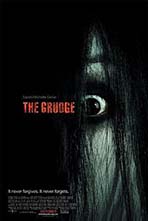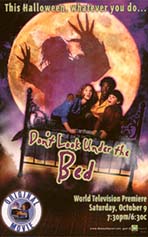Horror is a film genre seeking to elicit a negative emotional reaction from viewers by playing on the audience's primal fears. They often feature scenes that startle the viewer, and the macabre and the supernatural are frequent themes. Thus they may overlap with the fantasy, supernatural, and thriller genres.[1]
Horror films often deal with the viewer's nightmares, hidden fears, revulsions and terror of the unknown. Plots within the horror genre often involve the intrusion of an evil force, event, or personage, commonly of supernatural origin, into the everyday world. Prevalent elements include ghosts, aliens, vampires, werewolves, curses, satanism, demons, gore, torture, vicious animals, monsters, zombies, cannibals, and serial killers. Conversely, movies about the supernatural are not necessarily always horrific.[2]
The first depictions of supernatural events appear in several of the silent shorts created by the film pioneer Georges Mˇli¸s in the late 1890s, the best known being Le Manoir du diable (aka, The Haunted Castle, 1896) which is sometimes credited as being the first horror film.[3] Another of his horror projects was 1898's La Caverne maudite (aka, The Cave of the Unholy One, literally "the accursed cave").[3] Japan made early forays into the horror genre with Bake Jizo and Shinin no Sosei, both made in 1898.[4] In 1910, Edison Studios produced the first film version of Frankenstein, which was thought lost for many years.[5]
In the early 20th century, the first monster appeared in a horror film: Quasimodo, the hunchback of Notre-Dame, who had appeared in Victor Hugo's novel, Notre-Dame de Paris (1831). Films featuring Quasimodo included Alice Guy's Esmeralda (1906), The Hunchback (1909), The Love of a Hunchback (1910) and Notre-Dame de Paris (1911).[6]
German Expressionist film makers, during the Weimar Republic era and slightly earlier, would significantly influence later films, not only those in the horror genre. Paul Wegener's The Golem (1920) and Robert Wiene's The Cabinet of Dr. Caligari (also 1920) had a particular impact. The first vampire-themed movie was made during this time: F. W. Murnau's Nosferatu (1922), an unauthorized adaptation of Bram Stoker's Dracula.[7]
Hollywood dramas used horror themes, including versions of The Hunchback of Notre Dame (1923) and The Monster (1925) both starring Lon Chaney, the first American horror movie star. Other films of the 1920s include Dr. Jekyll And Mr Hyde (1920), The Phantom Carriage (Sweden, 1920), The Lost World (1925), The Phantom Of The Opera (1925), Waxworks (Germany 1924), and Tod Browning's (lost) London After Midnight (1927) with Chaney.
Horror films' evolution throughout the years has given society a new approach to resourcefully utilize their benefits. The horror film style has changed over time, but in 1996 Scream set off a "chain of copycats", leading to a new variety of teenage, horror movies.[34] This new approach to horror films began to gradually earn more and more income as seen in the progress of Scream movies; the first movie earned six million and the third movie earned one-hundred and one million.[34] The importance that horror films have gained in the public and producersÕ eyes is one obvious effect on our society.
Horror films' income expansion is only the first sign of the influences of horror flicks. The role of women and how women see themselves in the movie industry has been altered by the horror genre. In early times, horror films such as My Bloody Valentine (1981), Halloween (1978), and Friday the 13th (1980) pertained mostly to a male audience in order to "feed the fantasies of young men".[35] Their main focus was to express the fear of women and show them as monsters; however, this ideal is no longer prevalent in horror films.[36] Women have become not only the main audience and fans of horror films but also the main protagonists of contemporary horror films.[36] The horror industry is producing more and more movies with the main protagonist being a female and having to evolve into a stronger person in order to overcome some obstacle. This main theme has drawn a larger audience of women movie-goers to the theaters in modern times than ever historically recorded.[37] Movie makers also go as far as to integrate women relatable topics such as pregnancy, motherhood, lesbian relationships, and babysitting jobs into their films in order to gain even more female oriented audiences.[35]












